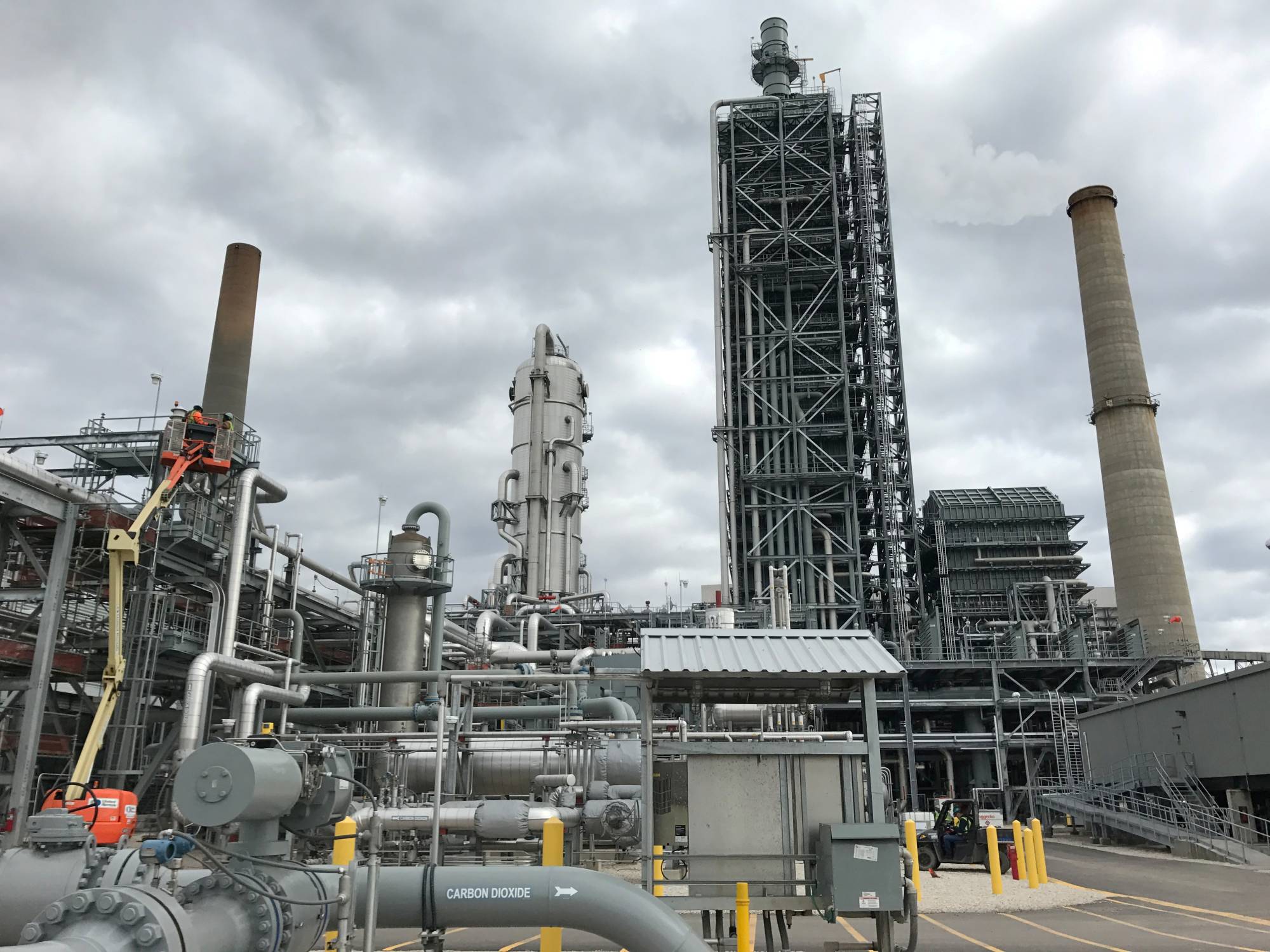
The United Nations just made carbon removal funding more accessible. By approving the first Article 6.4 methodology in mid-October 2025, the UN Supervisory Body officially launched a global carbon credit system that could unlock $250 billion in annual climate finance by 2030. For carbon capture and direct air capture developers in North America, this changes the economics of getting projects funded and operational.
Article 6.4, also known as the Paris Agreement Crediting Mechanism, replaces the older Clean Development Mechanism from the Kyoto Protocol. The new system verifies that carbon credits come from real, measurable emission reductions. This matters because investors and companies purchasing credits now have a UN-backed standard they can trust.
The approval comes at a time when carbon capture projects in the United States represent $77.5 billion in capital investment. With more than 270 publicly announced projects across the country, developers need reliable revenue streams beyond federal tax credits. Carbon credits provide exactly that.
The ability to store CO2 permanently underground is fundamental to making these credits work. Projects like California's first carbon storage hub and ExxonMobil's offshore storage operations in the Gulf of Mexico show how companies are building the infrastructure to handle captured carbon at scale.
>> RELATED: UN Endorses First Article 6.4 Carbon Credit Methodology, Unlocking Billions for Global Carbon Markets

Why This Matters for Carbon Removal Projects
CCS and DAC facilities need multiple revenue sources to make the business case work. The 45Q tax credit helps, offering up to $85 per ton for carbon storage from industrial sources and $180 per ton for direct air capture. But tax credits alone haven't been enough to trigger the wave of construction the industry needs.
Article 6.4 creates a second revenue stream through verified carbon credits that can be sold internationally. Companies and governments with net-zero commitments are looking for high-quality offsets. A UN-backed system gives them confidence that the credits represent actual CO2 removed from the atmosphere.
The market potential is significant. McKinsey projects the voluntary carbon market could grow from $2 billion in 2023 to more than $100 billion by 2030 as Article 6.4 trading scales up. That growth directly benefits carbon removal technologies, which are expected to command premium prices due to their permanence and verifiability.

"This is the rulebook we've been waiting for. It creates the clarity that we need to really ramp up massive private sector investments into projects that really cut emissions at a big scale."
Renant Heuberger, CEO of South Pole
How North American Projects Benefit
The timing couldn't be better for U.S. carbon removal developers. Projects like Occidental's STRATOS facility in Texas, designed to capture 500,000 tons of CO2 annually through direct air capture, will be able to generate and sell Article 6.4 credits once the system fully launches. The same goes for industrial carbon capture projects across Louisiana, Wyoming, and other states building CCS infrastructure.
Here's what makes Article 6.4 credits valuable for project developers:
Key Advantages for CCS and DAC Projects
- Independent verification: Credits must pass strict audits by independent parties before issuance, reducing buyer concerns about greenwashing.
- Premium pricing potential: High-integrity removal credits are expected to trade above standard offset prices due to their permanence and UN backing.
- International market access: Projects can sell credits to buyers anywhere in the world, not just domestic purchasers.
- Stacking with existing incentives: Article 6.4 credits can work alongside federal tax credits like 45Q, creating multiple revenue streams.
- Long-term price stability: A global standard helps stabilize carbon prices, making project finance modeling more reliable.
The World Bank estimates that countries working together through these carbon markets could cut up to 5 billion tons of emissions annually by 2030. For carbon removal projects, this cooperation translates into steady demand from governments and corporations trying to meet their Nationally Determined Contributions under the Paris Agreement.

>> In Other News: The XPRIZE-Recognized Innovator Driving the Next Wave of Low-Carbon Impact
What Changed with the October 2025 Approval
The UN Supervisory Body's October 2025 decision approved the first methodology under Article 6.4, focusing initially on renewable energy projects in developing countries. But the framework established applies to all project types, including carbon capture and storage. The Supervisory Body is expected to approve methodologies specific to CCS and DAC projects in upcoming sessions before COP30 in Brazil.
This matters because methodologies define how projects calculate and verify carbon reductions. Clear, approved methodologies mean developers know exactly what documentation and monitoring systems they need to generate credits. It removes uncertainty that has held back project financing.
At COP29 in Baku, governments committed to scaling climate finance to at least $1.3 trillion per year by 2035. Developed nations will mobilize $300 billion annually, expanding far beyond the earlier $100 billion target. Article 6.4 provides one of the mechanisms to channel that funding into actual carbon removal projects.
COP29 Climate Finance Commitments
| Category | Amount | Timeline |
|---|---|---|
| Total climate finance goal | $1.3 trillion/year | By 2035 |
| Developed nations mobilization | $300 billion/year | Starting 2026 |
| Estimated carbon credit market | $100 billion/year | By 2030 |
| Annual climate finance unlocked | $250 billion | Through NDC cooperation |
The Business Case Gets Stronger
Carbon removal has always faced a chicken-and-egg problem. Projects need buyers to justify investment, but buyers want proven technology before committing. Article 6.4 helps break this cycle by establishing clear rules that both sides can rely on.
Companies like Avnos, which projects near-term costs of $250 per ton for its hybrid direct air capture technology, can now factor carbon credit revenue into their business models with more confidence. When stacked with the $180 per ton 45Q credit for DAC, the economics start working even before costs drop to the DOE's $100 per ton target.
Industrial carbon capture projects also benefit. Facilities capturing CO2 from cement plants, steel mills, or ammonia production can generate credits from verified reductions. With Article 6.4 providing international market access, these projects aren't limited to selling within U.S. borders.

"The global carbon market now can grow into a $100 billion a year industry."
Mark Carney, former Bank of England Governor
How the Credit System Actually Works
Article 6.4 creates a framework where one country can fund emission reduction or removal projects in another country and count those reductions toward its own climate goals. The system includes corresponding adjustments, which means when credits are transferred internationally, they're deducted from the host country's emissions accounting. This prevents double counting.
For carbon removal developers, the process works like this:
- Project registers under Article 6.4 with host country authorization.
- Independent auditors verify CO2 captured and stored based on approved methodology.
- Credits (called A6.4ERs) are issued with digital tracking for transparency.
- Project sells credits to companies or governments needing verified offsets.
- Host country applies corresponding adjustment to its national emissions inventory.
The digital registry ensures every credit can be traced from issuance through retirement. Buyers know exactly what project generated their credit and how the CO2 was removed or stored. This transparency addresses one of the biggest criticisms of earlier carbon offset programs.
Challenges Still Ahead
The Article 6.4 system isn't perfect yet. The Supervisory Body still needs to approve methodologies for specific carbon removal technologies. Projects in complex sectors like forestry or agriculture face additional scrutiny around baseline setting and permanence. For CCS and DAC, the methodologies should be more straightforward since the CO2 capture and storage can be measured directly.
Another concern is authorization timelines. Projects need host country approval to generate credits, and some governments are still developing their authorization processes. This could slow credit issuance in certain regions. North American developers have an advantage here, with both the U.S. and Canada actively supportive of carbon markets.
Price volatility remains a risk too. While Article 6.4 aims to stabilize prices through consistent quality standards, the market is still developing. Credits currently range from under $5 per ton in some voluntary markets to over $90 per ton in the EU Emissions Trading System. Article 6.4 credits are expected to trade at a premium, but exactly where they'll settle is unclear.
What Carbon Removal Developers Should Watch
- Methodology approvals: Track when the Supervisory Body approves CCS and DAC methodologies, expected before COP30.
- Host country authorizations: Ensure your project's location has clear authorization processes in place.
- Buyer commitments: Major corporations are already signing offtake agreements for verified removal credits.
- Registry development: The UN registry for tracking credits is still being finalized and tested.
- Integration with 45Q: Clarify how carbon credit revenue stacks with federal tax credits in your project finance model.
Looking at What Comes Next
The Supervisory Body will meet again before COP30 in Belém, Brazil, where additional methodologies are expected. Carbon removal technologies are a priority given their role in achieving net-zero targets. Over 160 nations now have net-zero pledges, and about 60% of global companies already use or plan to use carbon credits to reach their climate goals.
For North American carbon capture and DAC developers, Article 6.4 represents a significant expansion of potential revenue sources. Combined with federal incentives, state support, and growing corporate demand for high-quality offsets, the business case for carbon removal projects is stronger than it's been. Projects that can demonstrate permanent storage with rigorous monitoring will be positioned to capture premium pricing in the emerging global market.
The UN system promises standardization that benefits everyone. Project developers get clear rules to follow. Buyers get verified credits they can trust. Host countries get transparent accounting that supports their climate commitments. It's not a silver bullet for climate finance, but it's a meaningful step toward making carbon removal economically viable at scale.
Subscribe to the newsletter
Daily decarbonization data and news delivered to your inbox
Follow the money flow of climate, technology, and energy investments to uncover new opportunities and jobs.
Latest issues
-
64 Carbon Projects Were Stuck. Texas Just Unlocked Them
Inside This Issue 🛢️ 64 Carbon Projects Were Stuck. Texas Just Unlocked Them ⚙️ In Ohio, Hydrogen Industry Presses on Despite Federal Uncertainty 🧲 Agami Zero Breaks Through With Magnetic Hydrogen...
-
This U.S. Plant Might Change Aviation Forever
In This Issue 🛫 A Georgia Plant Just Cracked Aviation's Fuel Puzzle 📉 CO2RE And ERM Release 2025 Update On Greenhouse Gas Removal Costs 🔗 Abatable Partners With BlueLayer To Streamline Corporate C...
-
Canada Just Made CCUS Way More Profitable
Inside This Issue 💼 Canada Unlocks EOR for Federal Tax Credits in Landmark Policy Shift 🚀 Carbontech Funding Opens as CDR Sector Pushes for Net-Zero Standard Revisions 💧 CHARBONE Confirms its Firs...
Company Announcements
-
Step strengthens Louisiana’s role in U.S. energy leadership and advances project finance process for biomass‑to‑fuel facility SACRAMENTO, Calif. & NEW ORLEANS -- DevvStream Corp. (Nasdaq: DEVS...
-
Climeworks Opens the World’s Largest Direct Air Capture Innovation Hub
Key takeaways: Climeworks launches the largest innovation center for Direct Air Capture, employing over 50 engineers in Zurich, Switzerland. The center is designed to reduce the cost and increase...
-
XCF Global Moves to Double SAF Production with New Rise Reno Expansion
Initial development completed at New Rise Reno 2, advancing XCF's second SAF production facility and positioning construction to begin in 2026. $300 million planned investment will double XCF'...
-
Carbon Capture Technology Relies on High-Performance CO2 Sensors
As the Global South's first Direct Air Capture (DAC) company, Octavia Carbon has commissioned the world's second DAC + geological storage plant. Harnessing Kenya's abundant renewable geothermal ene...